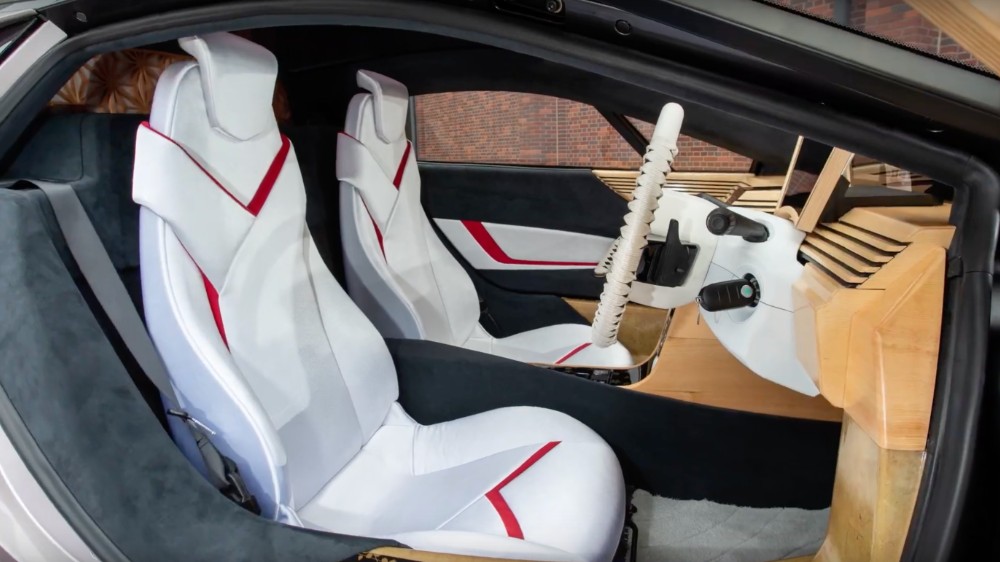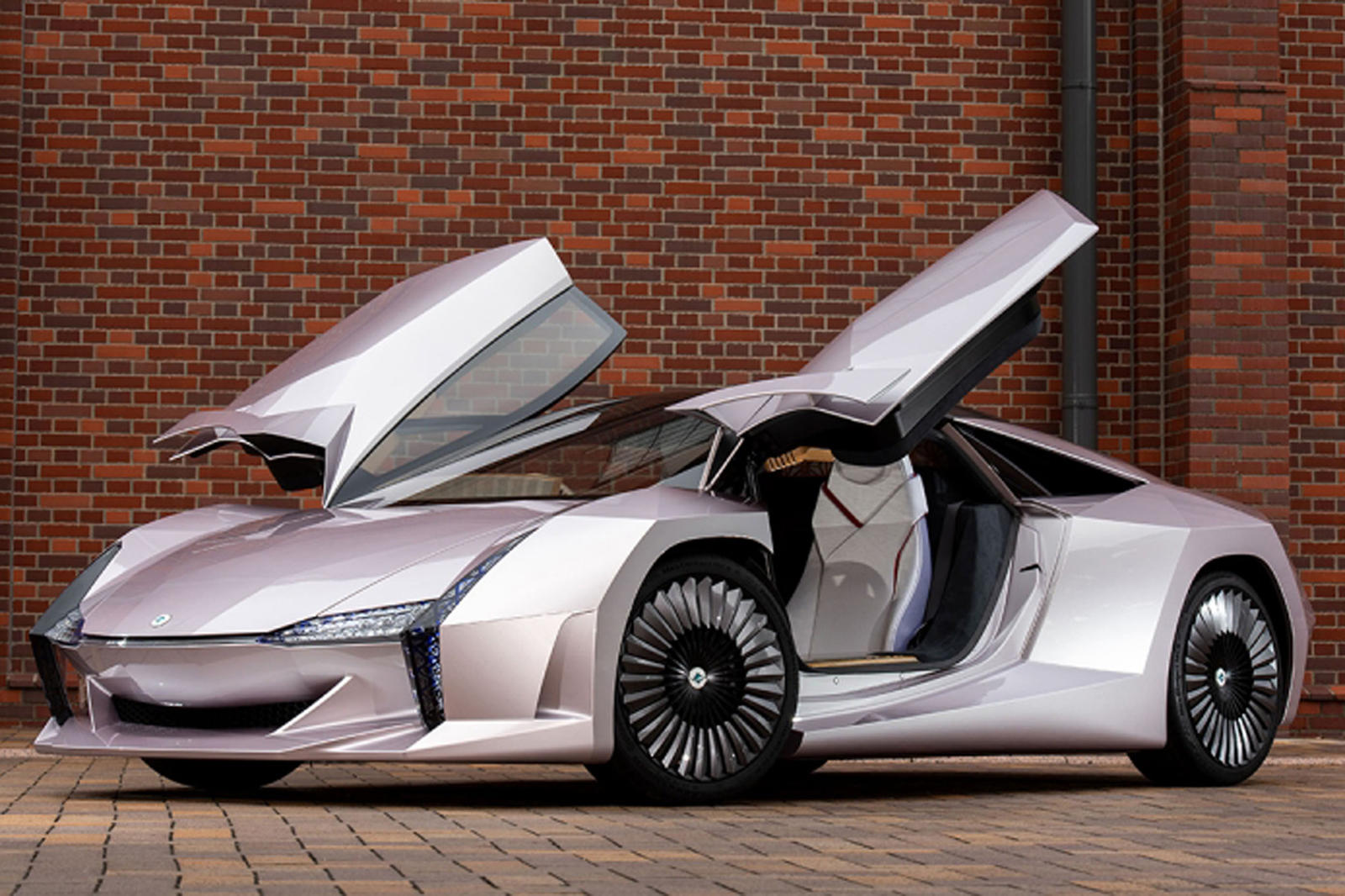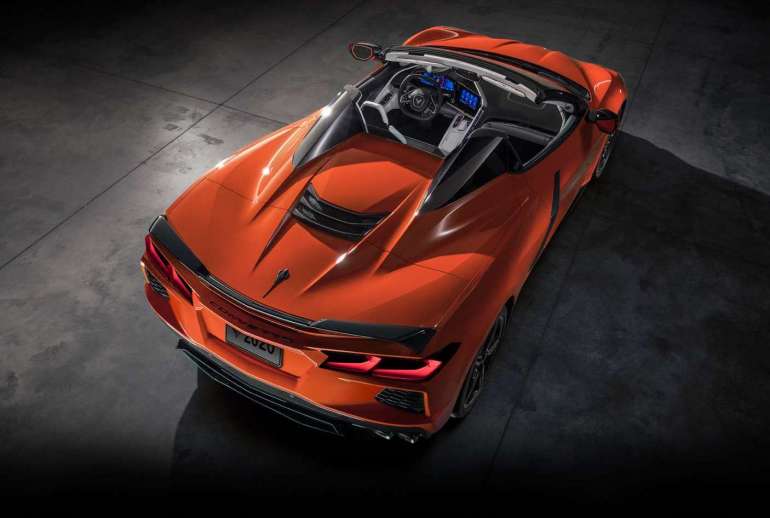Folks, you are looking at the Nano Cellulose Vehicle or NCV, Japan’s answer towards better sustainability and lightweight manufacturing. And as you can see, it’s essentially a two-door sports car. But it’s also made of wood, specifically nano cellulose fibers or plant-derived material.
Japan is known for many things like sake, sushi, and cutesy anime. But it seems Japan’s Ministry of Environment has other things in mind. Their latest creation is the NCV Project which utilizes CNF or Cellulose Nano Fiber instead of metal, plastic, fiberglass, and composites for the vehicle body.
Wait, this isn’t the first time wood is utilized to create a car

Back in the old days, wood was primarily used in building the chassis of a motorcar. Now, you’d be hard-pressed to find an automaker with enough guts to use wood in a vehicle’s framework. And as it turns out, we know of such a carmaker in the form of the Morgan Motor Company. For over a century now, Morgan still uses wood for the framing of the body shell in their new vehicles.
This is the reason why we weren’t exactly blown away by a wood-based supercar like the NCV.
But the NCV is almost entirely made of wood

As it turns out, the NCV is different. Most of the bodywork and a significant part of the tub is crafted from recycled nano cellulose fibers. According to Japan’s Ministry of Environment, nano cellulose fibers can be derived from recycled or agricultural waste. The fibers are up to five times as strong yet one-fifth of the weight of conventional steel panels.
And since those wooden fibers are stronger and lighter than steel, the NCV is almost half as light as a conventional vehicle with a ten percent reduction in overall mass. This means the NCV requires less power to provide adequate thrust.
Besides the obvious benefits in overall efficiency and performance, using recycled cellulose fibers drastically reduces carbon emissions in the manufacturing process. And when the car gets old or phased-out, all the wooden body panels can be further recycled for future use.
For a wooden car, the Nano Cellulose Vehicle is quite a looker

The Japanese are great at making cars – hell, they even taught the Brits how to do it right in the mid-sixties with the Daihatsu Compagno, the first-ever Japanese car sold in the UK. Yes, the Compagno is a bit rubbish, but it heralded the growth of Japanese-made import cars (which also spelled the demise of the British auto industry).
In terms of looks, the Nano Cellulose Vehicle is like the lovechild of the latest Acura NSX and Lamborghini Huracan. It also has this ‘Back to the Future’ vibe with those awesome butterfly doors. However, the NCV is essentially a concept at this point. But if the unique, angled styling cues make it to production, the NCV wooden supercar will give other performance machines a serious run for the money in terms of presence.
It has kimono seats and real wood for the dash

If the exterior is mostly made of wood, why not use the same material for the interior? The NCV has a real wooden dashboard with none of the fake wood trimmings found in most luxury cars. We’re assuming the steering wheel is also made of wood, but it’s hard to see underneath the samurai-inspired wrapping of the tiller.
But the biggest attractions in the NCV’s interior are the kimono-wrapped seats. If there’s any question where the NCV came from, you only need to look at the seats to discern this car is made in Japan.

Unfortunately, the Ministry of Transportation failed to disclose the engine or power options. However, the NCV concept is equipped with a hydrogen fuel cell. This means a top speed of 12 mph (20 kph), which also makes it the slowest supercar in the world.



2 Comments
Fran
The author’s final statement suggests a false equivalence, hydrogen fuel cells DO NOT equate to low speed. Hyundai’s production Nexo SUV set a 106mph speed record at Bonneville in Sep 2019. Their production Tucson SUV hit 94mph in 2015. Ford’s non-production Fusion Hydrogen 999 fuel cell car hit 207mph in 2007. The non-production Buckeye Bullet 2 hit 303mph in 2009. Do your research, I’m not sure why the dlmag editors let this slide.
Alvin Reyes
Hi, the article didn’t explicitly say that hydrogen vehicles are generally slow. Since the NCV vehicle is a concept at this point, the hydrogen fuel cell it came with is only enough to propel the car to 12 mph. We apologize if the final paragraph was a bit misleading. But anyhow, thanks for pointing this out and we appreciate your patronage.
Comments are closed.